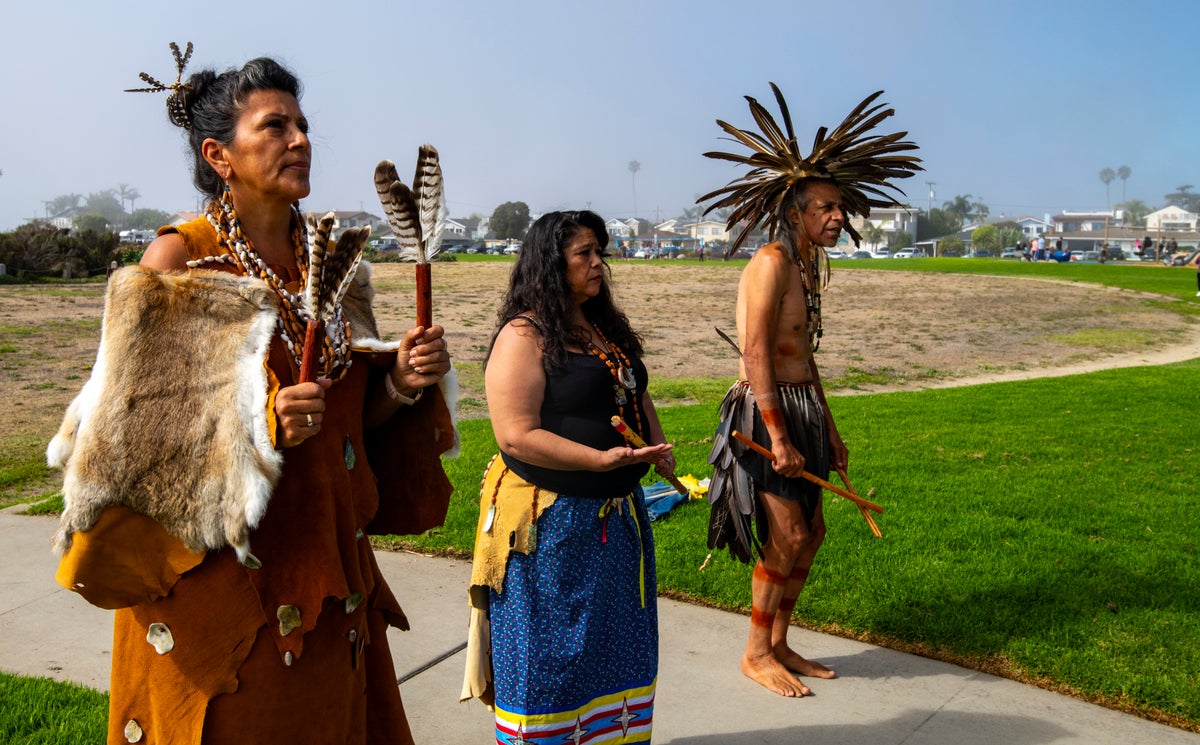
Your support helps us to tell the story
For more than 10,000 years, Native Americans have been living along California’s central coast, an area of breathtaking beauty with stunning turquoise waters rich in biodiversity. Now, in the first partnership of its kind, the area will soon be part of a new national marine sanctuary that Native people will co-steward with a federal agency.
It will give the Chumash people, once the largest cultural group in California, a say in the way the marine sanctuary is preserved. The Chumash Heritage National Marine Sanctuary, designated by the Biden administration last week, is the first tribally nominated sanctuary in the United States.
It covers 116 miles (187 kilometers) of California coastline. The more than 4,500 square miles (11,655 square kilometers) of coastal and offshore waters that will be included contain diverse marine life increasingly threatened by climate change and pollution from human activities.
The designation, which was announced by the National Oceanic and Atmospheric Administration, will take effect after Congress has 45 days to consider it.
The Chumash people, which span several tribes, including the federally recognized Santa Ynez Band of Chumash Indians, have long depended on the ocean for fishing and shellfish, and today some are involved in environmental monitoring and advocacy work.
Some collaborative projects may include coastal signage, or scientific studies along the shoreline where there may have been Indigenous villages in the past that are now submerged.
“The waterways adjacent to the aboriginal territory are areas that our tribal people have thrived and lived off of for many years,” said Kenneth Kahn, chairman of the Santa Ynez Band of Chumash Indians. “The legacy of all Chumash people in the namesake of the Marine Sanctuary is certainly very important.”
The sanctuary comes nearly a decade after it was originally nominated by the late Chief Fred Collins of the Northern Chumash Tribal Council in 2015.
“When he passed away three years ago … he asked me to complete this for him, and I promised him I would,” said Violet Sage Walker, chairwoman of the Northern Chumash Tribal Council.
There have been other national marine sanctuaries that involved collaboration with tribes, but this will be the first one where it is written into the final management plan with Indigenous partners included in the conversation from the beginning, Walker said.
A growing Land Back movement has been returning Indigenous homelands to the descendants of those who lived there for millennia before European settlers arrived. That has seen Native American tribes taking a greater role in restoring rivers and lands to how they were before they were expropriated.
Earlier this year, the Yurok Tribe in Northern California became the first Native people to manage tribal land with the National Park Service under a historic memorandum of understanding signed by the tribe, Redwood National and State Parks and the nonprofit Save the Redwoods League.
Stretching from around the San Louis Obispo County area in central California down to the border of the Channel Islands National Marine Sanctuary off the coast of Santa Barbara, the Chumash marine sanctuary represents a unique mix of ecological zones of the northern and southern parts of the coast, said Stanford University professor Stephen Palumbi, who is conducting research in the area.
The waters are home to at-risk species, such as snowy plovers, southern sea otters, leatherback sea turtles, abalone and blue whales. It also includes ecologically rich features like the Rodriguez seamount, formed from an extinct volcano.
When Palumbi and his team were examining a set of silvery fish called grunions that beach themselves when they spawn in the southern part of the coast, they brought their findings to their partners at the Northern Chumash Tribal Council.
“They were saying, ’Oh yeah, we usually get them in the south just like you’re seeing, but you know, just a couple generations ago we could get them further north,'” Palumbi said, giving an example of the value of the tribal members' knowledge.
The latest national marine sanctuary will advance the White House’s America the Beautiful initiative, which set a goal of conserving and restoring at least 30% of U.S. lands and waters by 2030.
Some advocates had originally hoped the boundaries of the sanctuary would extend north to the edges of the Monterey Bay National Marine Sanctuary, past Diablo Canyon, which houses California’s last operating nuclear power plant. However, after concerns from wind energy companies, NOAA decided to carve out an area planned for off-shore wind farm development but laid out a process for potential sanctuary expansion in the future.
“It’s really a balancing act of trying to accomplish the renewable energy goals of the Biden-Harris and Newsom administrations and America the Beautiful,” said Paul Michel, NOAA regional policy coordinator.
The final management plan includes a framework for co-stewardship that involves an advisory group with a voting seat for the the Santa Ynez Band of Chumash Indians and two “Indigenous Cultural Knowledge voting seats," as well as a policy council consisting of the Santa Ynez Band, NOAA, and California government.
“We not only protected our homeland but we protected our spiritual connection to our ancestors and our future generations for everybody,” said Walker. “This is something that will live long beyond my lifetime.”







